The second day of our trip began in Lethbridge. We departed around 8:30 am for the short drive to our first photo site, Head-Smashed-in-Buffalo-Jump.
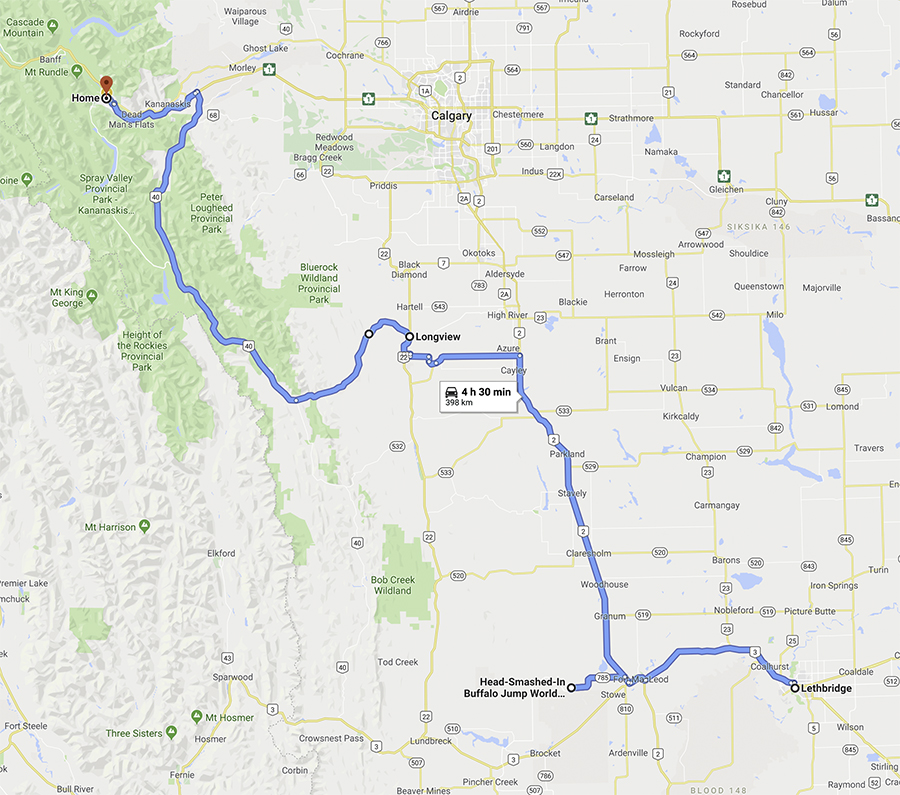
Head-Smashed-In Buffalo Jump is a buffalo jump (a cliff formation which First Nations historically used to hunt and kill plains bison). It’s located where the foothills of the Rocky Mountains begin to rise from the prairie, 18 km west of Fort McLeod. It is a UNESCO World Heritage Site and home of the museum of Blackfoot culture. The buffalo jump was used for 5,500 years by the indigenous peoples of the plains to kill bison by driving them off the 11 metre (36 foot) high cliff. The surrounding landscape is very scenic, particularly in autumn.
Today’s first photograph caught my eye soon after we arrived . It was taken from the museum parking lot, looking south. It depicts the local topography, inhabited for centuries by the Blackfoot and their predecessors. In the distance, you can see a wind farm, a much newer arrival on the scene. This area, along Highway 3, the Crowsnest Trail, is occupied by many such wind farms, taking advantage of the prevalent winds blowing from the southwest to the northeast.
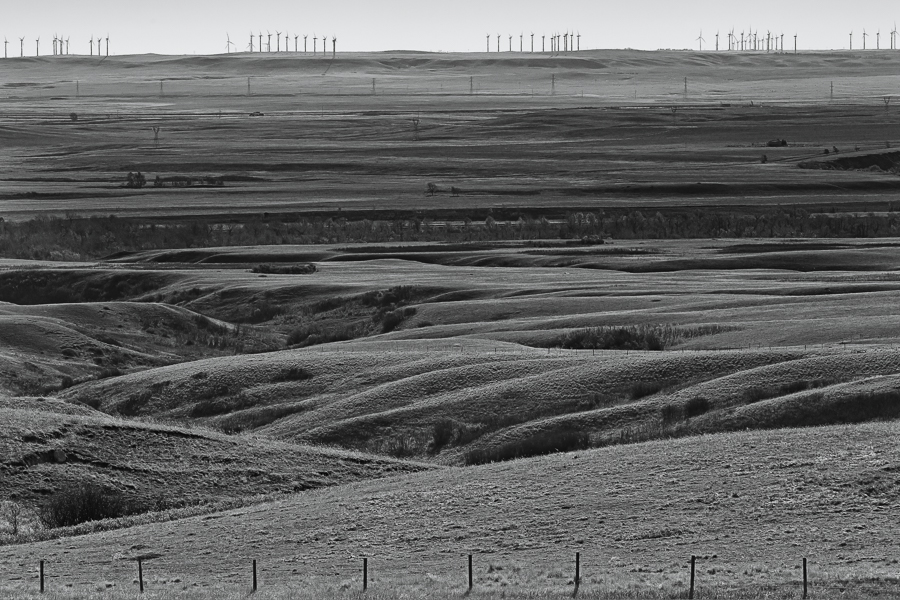
The best way to see and photograph the local landscape is to follow the interpretative trail which leads the visitor through the site. The next two shots show the cliffs where the bison of the day met their demise. Today, we enjoy the beauty of the landforms and the autumn colours of the prairie and the foothills.
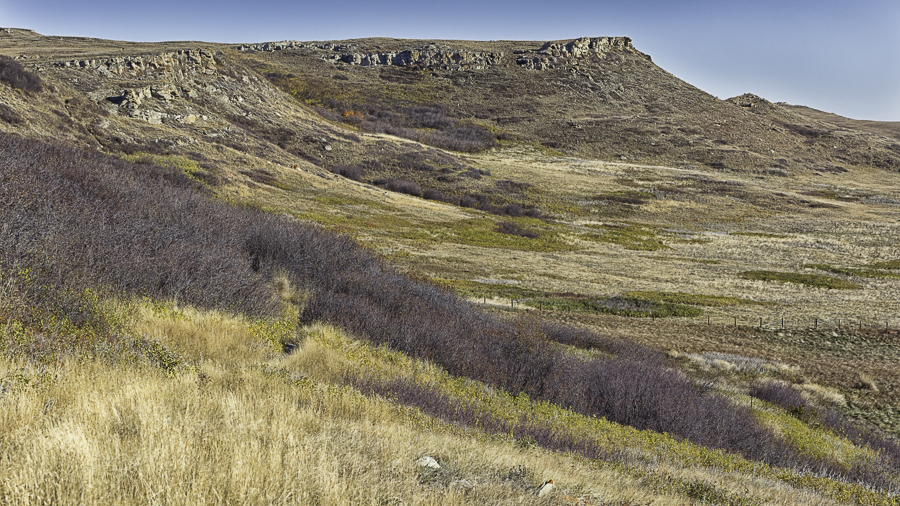

The last image from Head-Smashed-in-Buffalo-Jump was taken at the foot of the cliffs. It includes a fence line (photographers like these) with some birdhouses mounted on some of the posts. Curious.

Upon completing our circuit of the interpretative trail, we moved on in the direction of home. We paused briefly in Longview where we took Highway 40 through Kananaskis Country en route to Canmore. We had no specific photo stops in mind knowing that this very scenic area would offer some great opportunities. We were not disappointed. Shortly after leaving Longview, I took this next picture, very typical of the landscape in this ranching area.
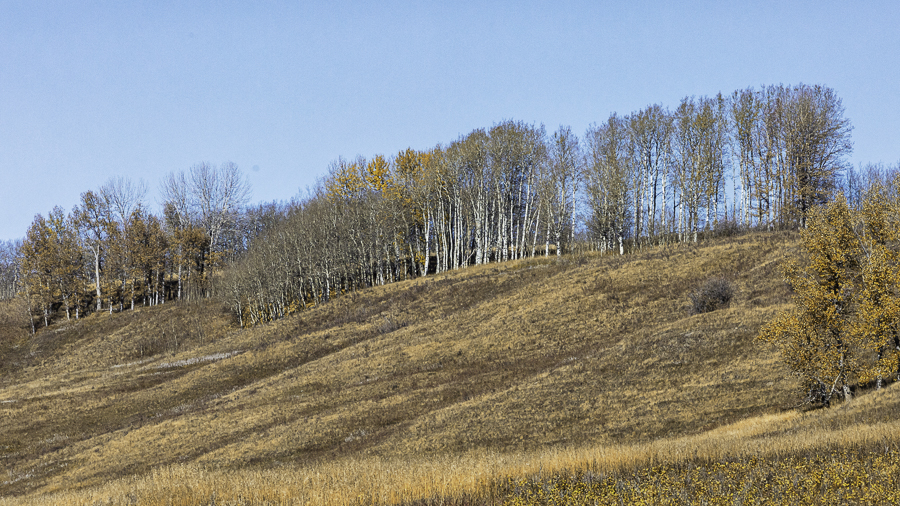
Later on, as we approached the Highwood Pass we happened upon a familiar scene, Storm Mountain. It was covered in a light mantle of snow, a persona we had not seen and photographed before. Storm Mountain and many other peaks of the Misty Range show the effects of tectonic stress, visible as bending of the rock. That distortion, although always visible is highlighted in this scene by the snow trapped in grooves created by the bending.
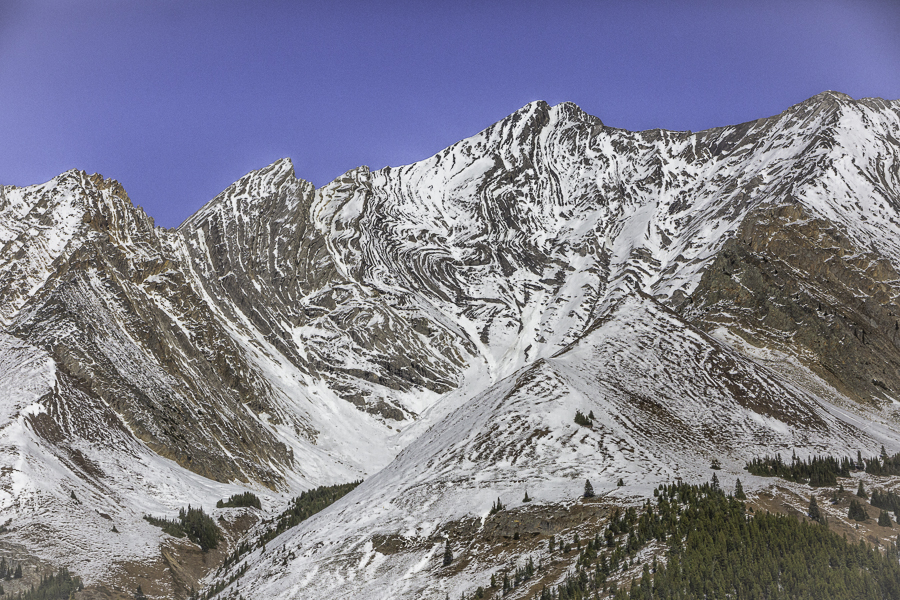
This next photo, also of Storm Mountain was taken from a different angle and focuses on an area to the right of the area shown in the previous photograph.
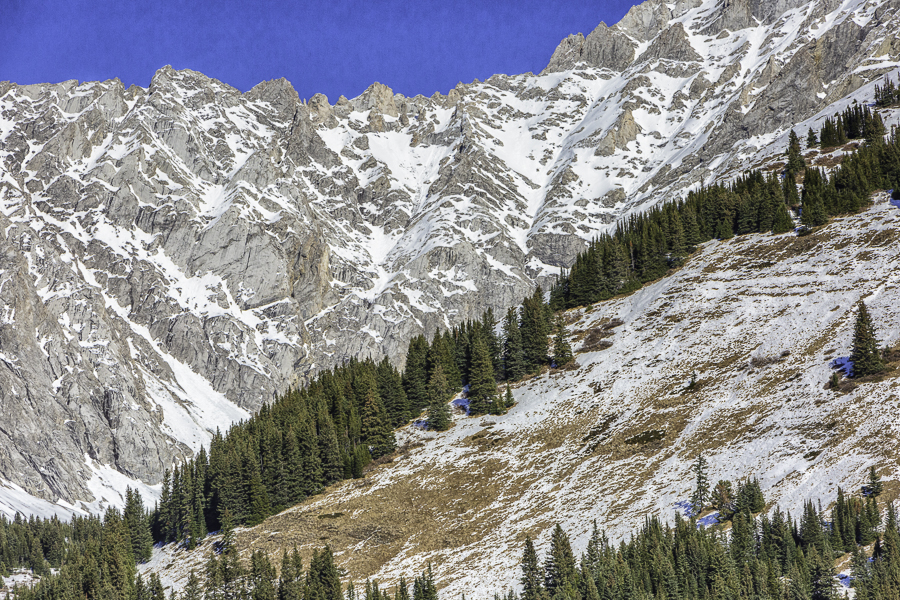
As we neared the conclusion of our trip, I took this picture of a favourite scene, one I’ve photographed frequently in the past. This is the first time I’ve captured it with a dusting of snow.
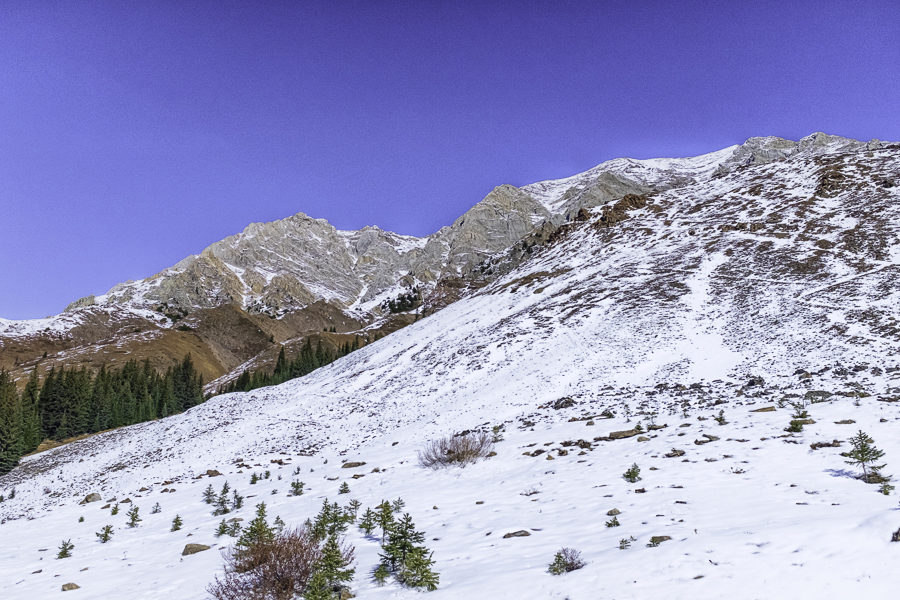
We wrapped up an enjoyable and productive trip later in the afternoon. I took about 350 pictures in total, some not so good, some not distinctly different from others and happily, a score of “keepers” some of which you’ve seen today.

Where are the Buffalo???
Ist pic of Storm Mountain….. love the way you captured the snow defining the rock formations….very dramatic!!
The first Storm Mountain photo with the snow in the crevasses is great. Talk with you soon; just home from Saskatoon. B
Nice Fall photos. way to go Peter.
Thanks. Dave
Hi Peter:
Great work, have passed the area many times that have the sign saying Head Smashed in Buffalo and wondered what the area would like. Thanks for showing me some of the beauty of the area. All of your work is fantastic and I really appreciate that you share it with me, thanks again.
Hi to Rolande